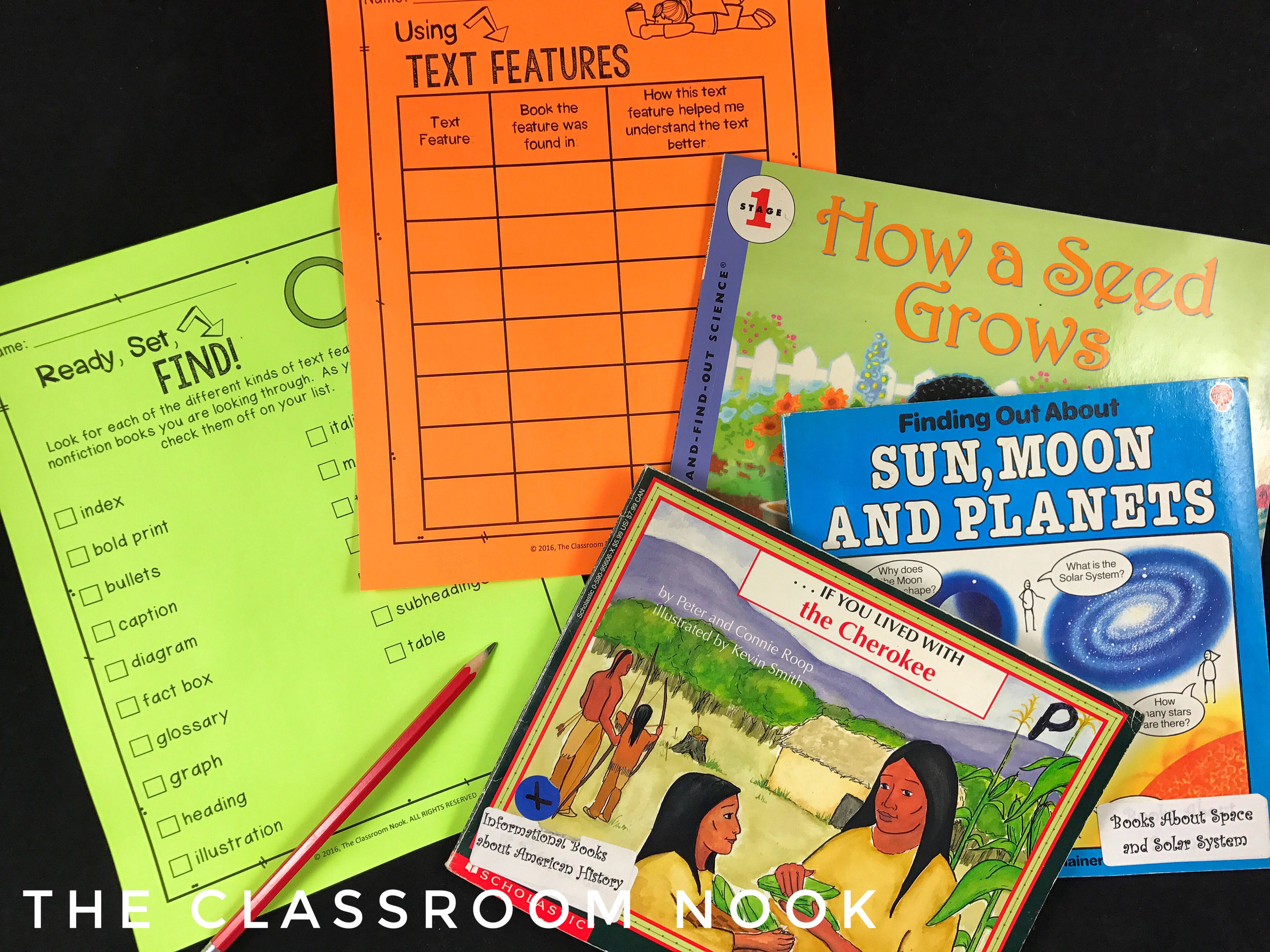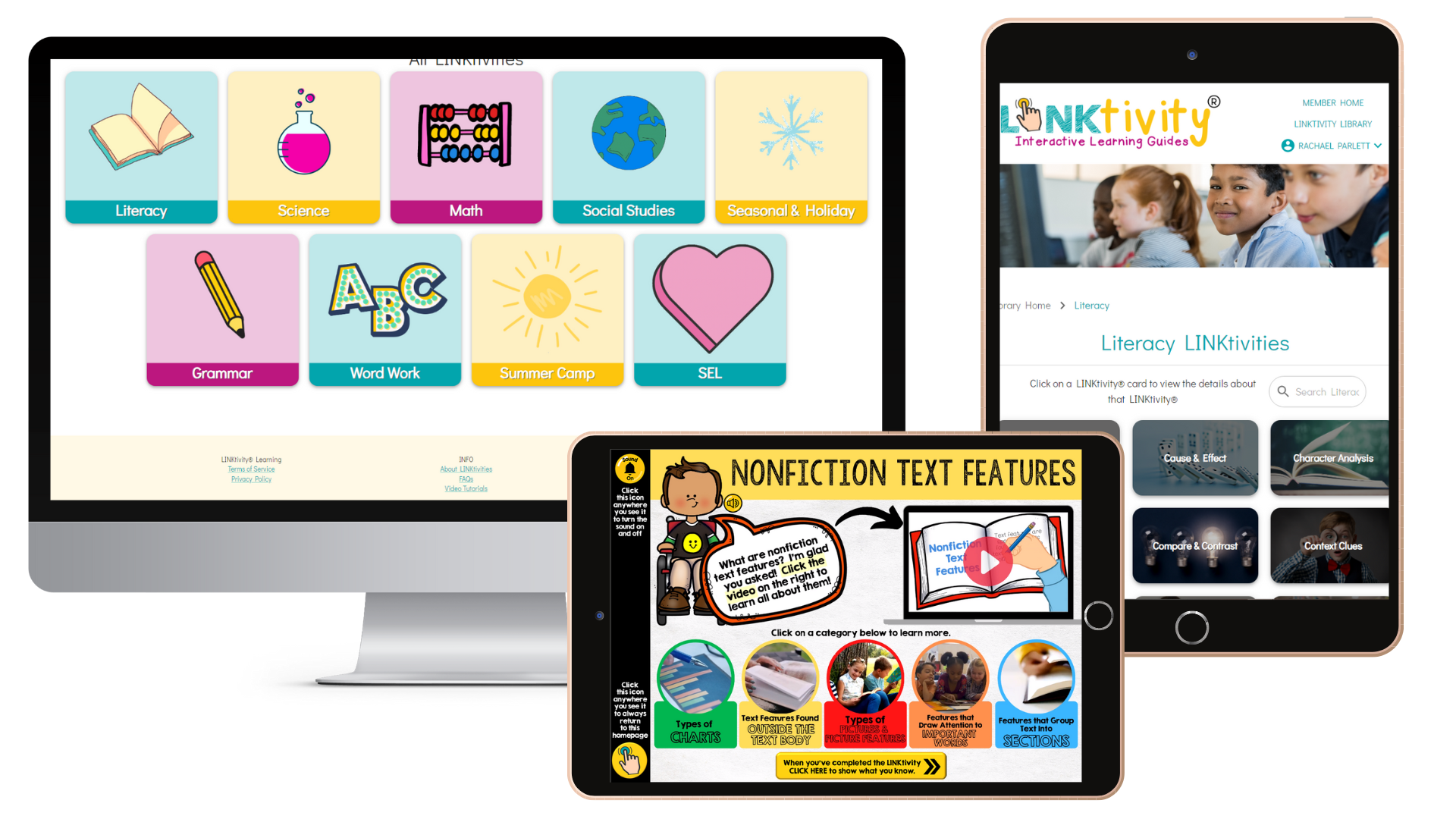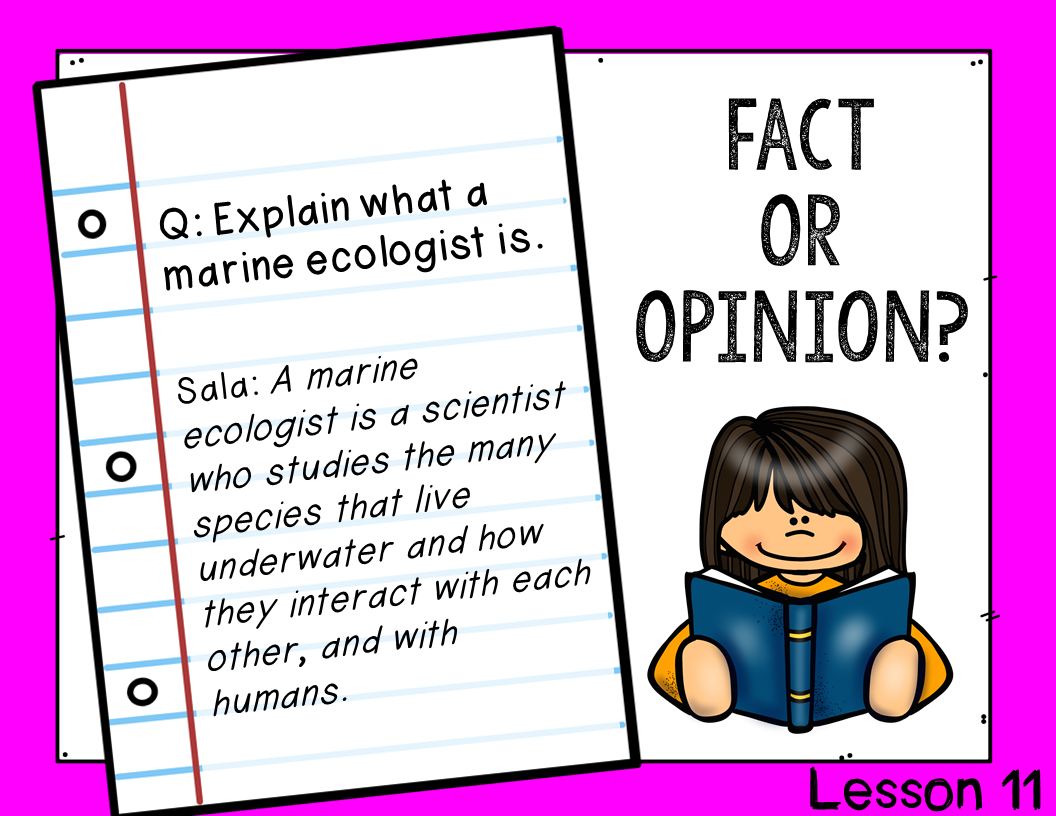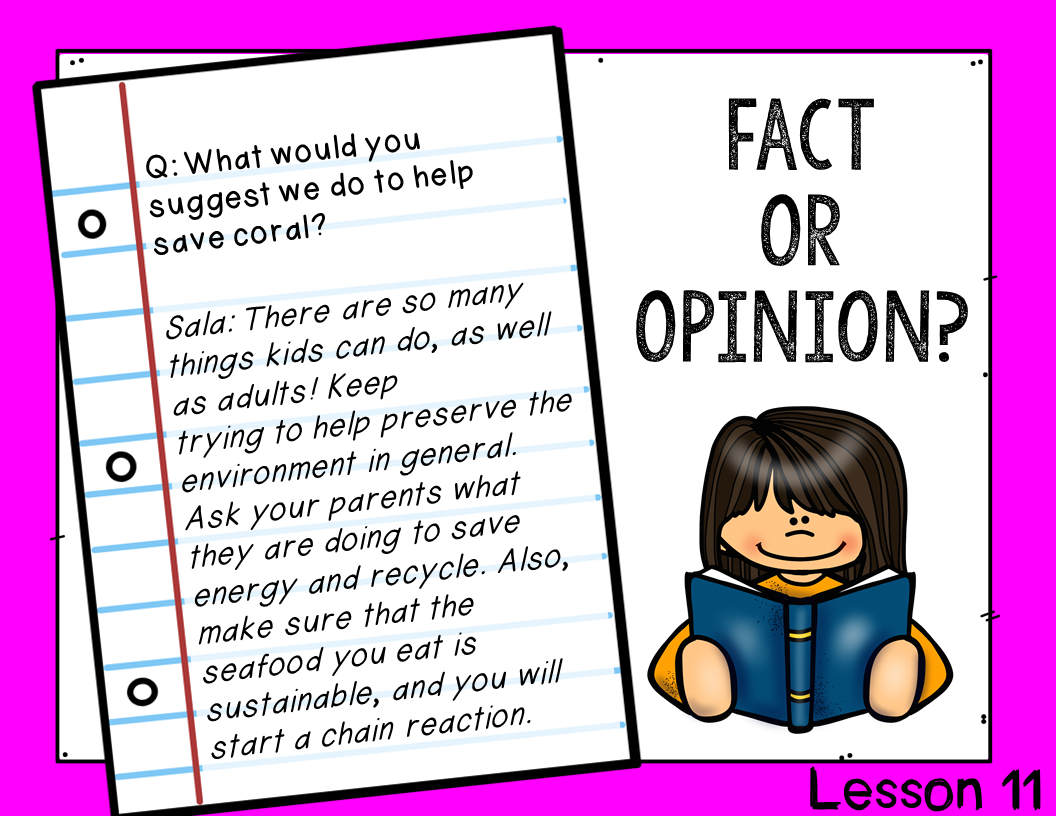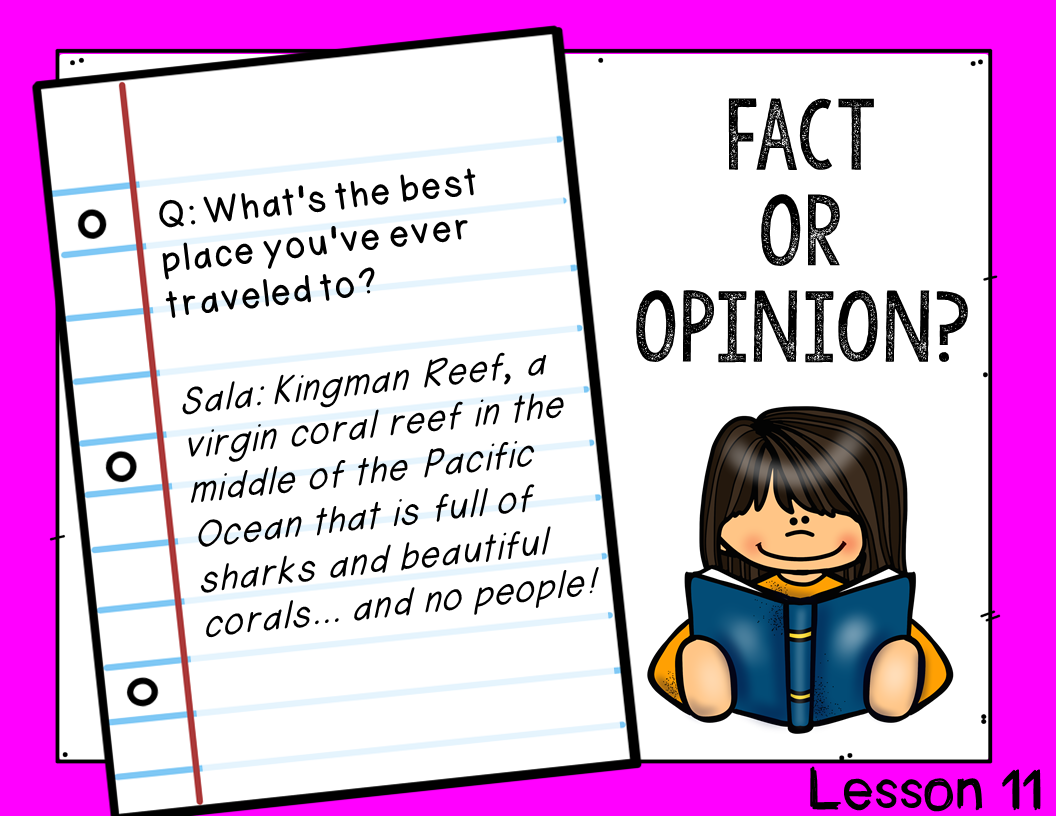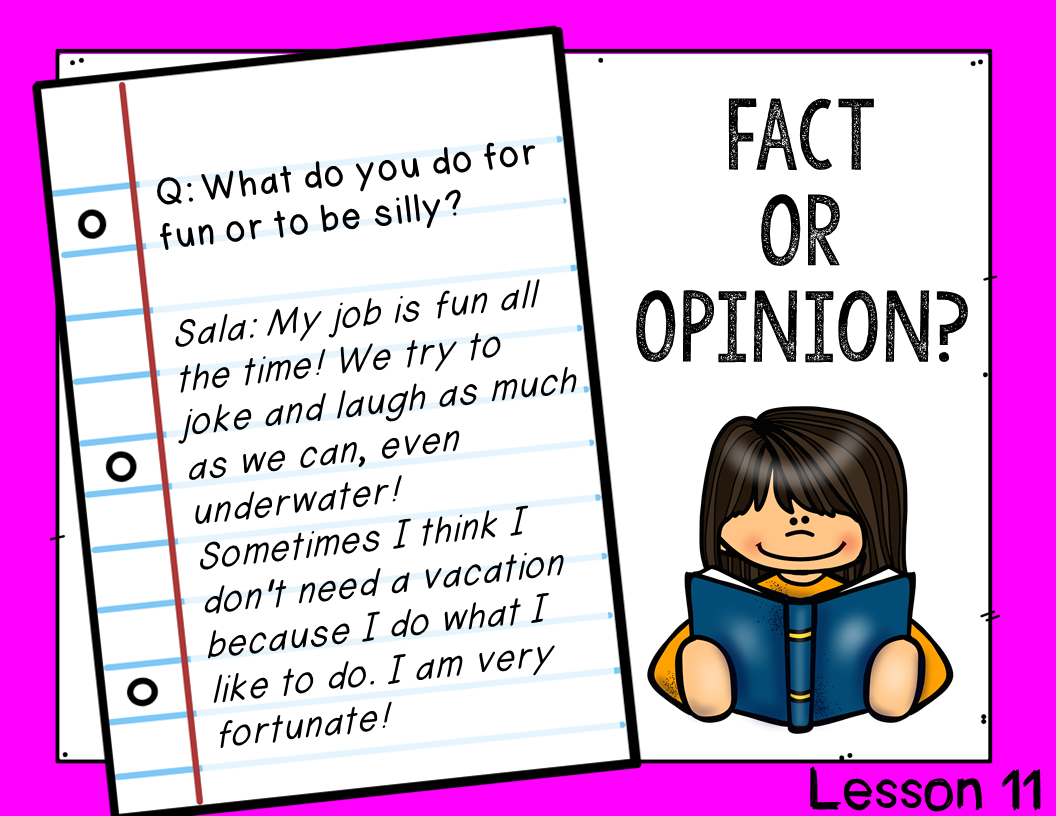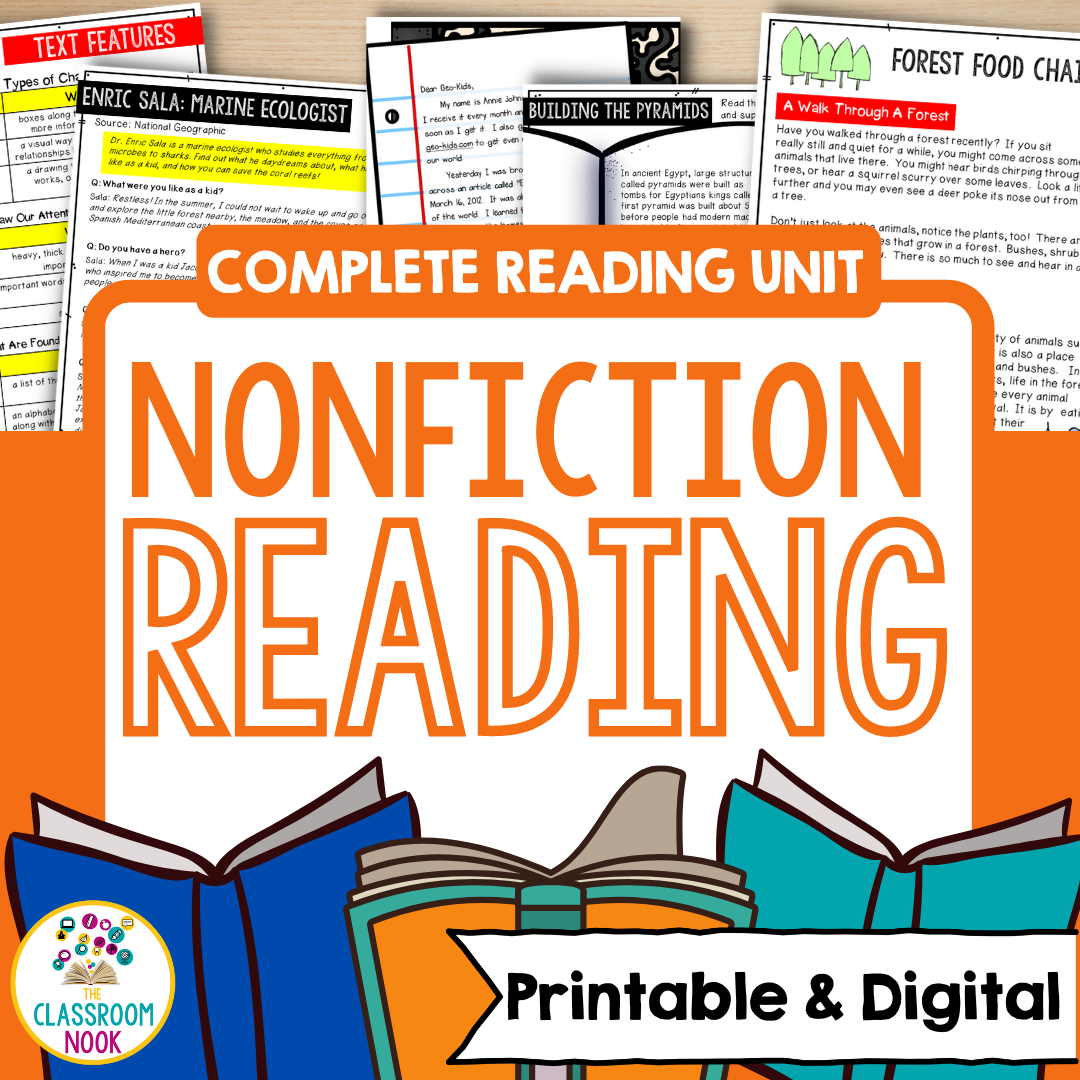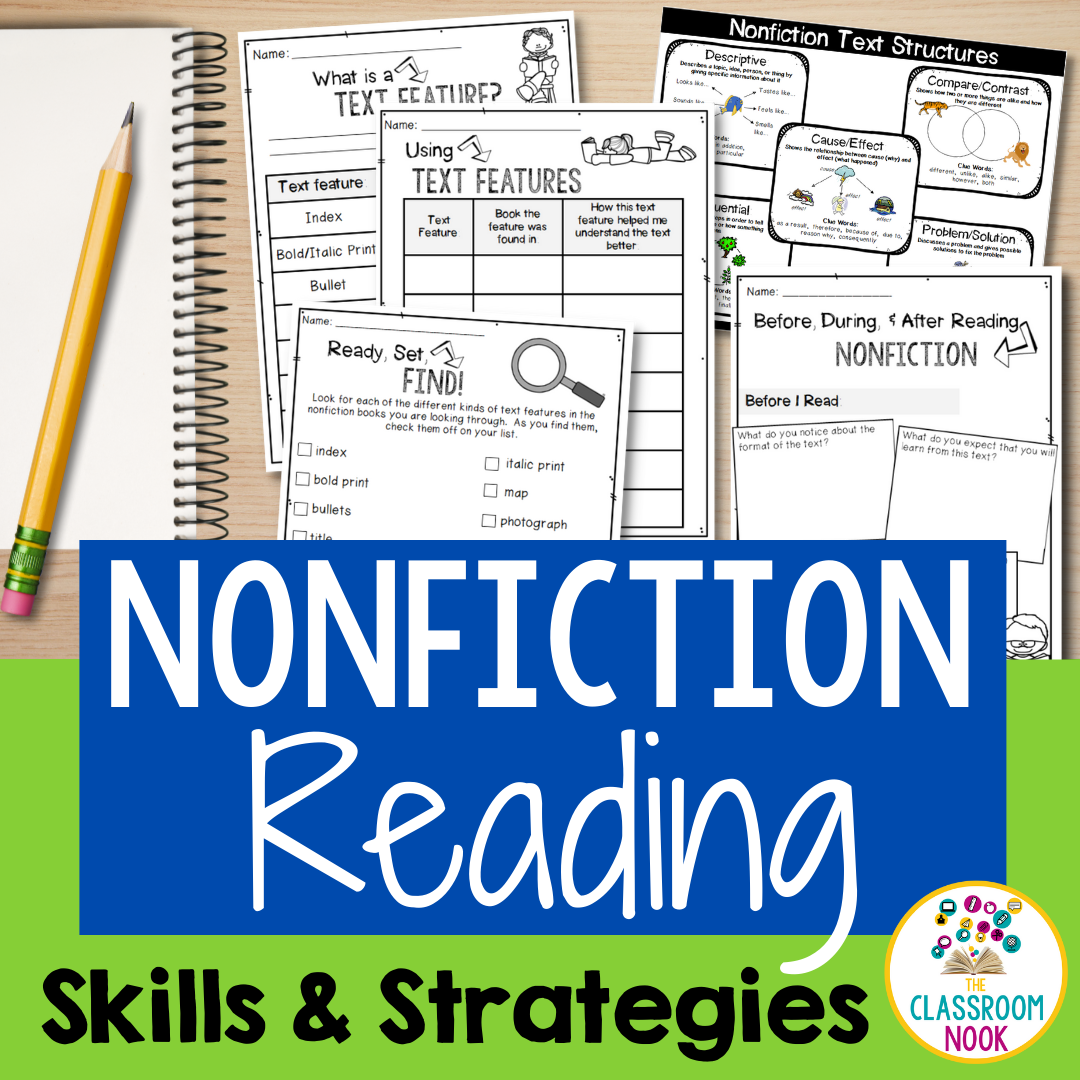5 Ideas for Teaching Students How to Read Nonfiction
Love podcasts? Check out this podcast in the form of a podcast episode on The Classroom Commute.
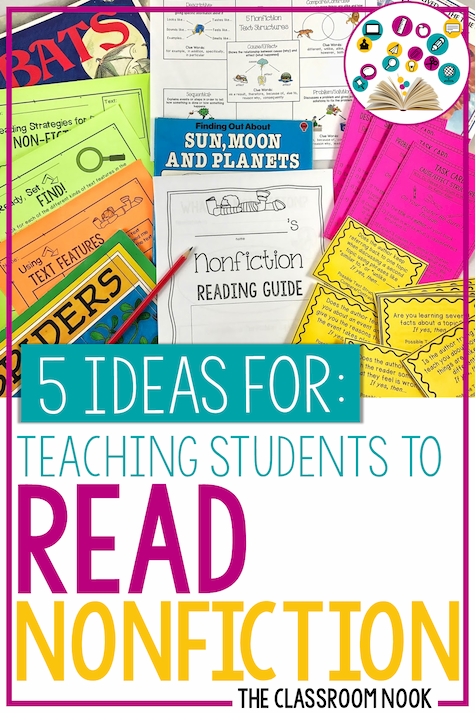
If you think about it - most of what we read in life is nonfiction. We read street signs when we are driving, we read recipes when we cook, we read manuals when we are trying to figure out why the heck the vacuum cleaner isn't working...again!
Teaching students to read nonfiction texts effectively is a reading beast all on its own. There are a lot of moving parts: identifying text features and structure, using the glossary, referring to headings and sub-titles to know where you're going to find the facts that you need, and much more!
Take reading that vacuum manual I mentioned a moment ago. You're not going to take the time to read about how to change the bag in your vacuum if what you're trying to do is figure out why it won't suck up dirt and pet hair up properly. Instead, you'll look at the table of contents to see where that issue will be addressed within the manual and cut right to the chase.
We read nonfiction differently than we read fiction texts, and because of that, we have to TEACH reading nonfiction differently.
Here are 5 ideas for teaching nonfiction reading to your students so that they can effectively learn the skill and apply it to their daily life.
1. Teach text features:
Looking at a page in a nonfiction book will look vastly different than a page inside a fictional text. You'll see bold words, headings, subheadings, fact boxes, and so on. We know that authors include these text features to draw attention to important facts. We want our students to be able to immediately find and use these text features to help them understand the text.
One of my most favorite ways to initially teach students to identify these text features is to have them go on a text feature scavenger hunt. (part of my nonfiction reading unit) After defining each type of text feature (bold words, charts, headings...etc...) and showing several examples of each, I provide students with dozens of books and let them have-at-it!
They work in teams or partners to try to find as many different text features as they can in a specified amount of time. They can either use a checklist (great for younger readers) or even a more advanced recording sheet where they indicate not just the text feature they they have found, but what the texture feature teaches them.
After this initial activity, students can then continue identifying and recording text features that they find in their own independent reading books.
You May Also Like to Read: 3 EASY STEPS FOR TEACHING STUDENTS TO USE NONFICTION TEXT FEATURES
Another awesome activity (and my personal favorite!) that will help students to hone in on text features is to have them learn through a LINKtivity digital learning guide. (If you’re new to LINKtivities, you can read all about what makes them so awesome HERE!)
Inside the LINKtivity students watch a fun doodle-style video before exploring the different types of nonfiction text features. They also complete a simple flipbook that serves as a great reference for later!
Tap into our LINKtivity Library
Did you know that you can get an ALL-ACCESS pass to my entire vault of LINKtivity® Interactive Learning Guides (Including our nonfiction LINKtivities)?
You can! Inside the LINKtivity® Learning Membership!
2. TEXT STRUCTURE GROUP LINKtivity® & Discussions:
First of all, let's be clear about what text structure is. There are 5 major text structures that authors use to present nonfiction information in:
Descriptive - text describes a topic, idea, person, or thing by giving specific information about it
Sequence - text explains events or steps in order to tell how something is done or how something happens
Compare and Contrast - text shows how two or more things are alike or different
Cause and Effect - text shows the relationships between cause and effect
Problem and Solution - text discusses a problem and gives possible solutions to fix the problem
Teaching students to identify text structure is one of the trickiest parts of nonfiction reading. Of course, the best way to teach them how to do this is going to be through repeated exposure and practice.
A great way to kick off your students’ exploration is with, none other than a LINKtivity®!
The LINKtivity helps to showcase each structure’s features with a set of custom-made reading passages. They also complete a flipbook as they explore the LINKtivity that can serve as a great resource as they continue learning about nonfiction texts.
After reading passages showcasing each text structure, the next step is to have students work in small groups to identify the text structure of several book that they look through together.
Need some suggestions for books to use? This article has tons of book titles to get you started!
Once students get into their groups to explore, I like to provide them with some discussion prompts (shown above) that will help guide their thinking and lead them to identifying the structure correctly. Students look through several books, ideally one book per structure, and use the discussion prompts to help them to determine the text structure of each book. For younger readers, you might consider having each group only focus on ONE structure at a time within their groups and provide several books illustrating that one structure. Students can then rotate through the different books, using the same discussion prompts.
Find these text structure cards inside my Nonfiction Reading Unit.
And - certainly teaching text structures is never a one-and-done lesson. Constant exposure is essential to students really getting it. That's why I provided my students with a student reference sheet to keep in their reading notebooks.
Want a free copy of the nonfiction text structure reference guide?
FREE TEXT STRUCTURE REFERENCE GUIDE
Grab this FREE reference guide to help students identify the text structure of what they are reading.
The guide provides visual examples of each text structure as well as gives them clue words and phrases to look out for in the text that will help them identify each structure.
3. TEACHING READING STRATEGIES WITH NONFICTION:
Teaching reading strategies such as making connections, questioning, and inferring is a given when we teaching fiction - but those same reading strategies take on a slightly different look when applied to nonfiction. Instead of asking our students to predict what they think will happen in the next part of the story, we ask them what they think they will learn.
Here are some sample prompts to use with your students when teaching reading strategies through the lens of nonfiction:
Making Connections:
What do you already know about this topic? What other books have you read about this same topic? How does this issue/topic affect our daily life/society?
Guessing/Predicting:
What do you think you will learn in this book?
Questioning/Wondering:
Why do you think the author chose to use that text feature? How does it help you understand the topic better? What questions about this topic do you think will get answered as you read?
Determining Importance/Noticing:
What details stand out to you through the text features? What new information are you learning through this map, graphic, diagram...etc.?
Summarizing/Checking for Understanding:
What new facts have you learned?
Picturing/Visualizing:
What images come to mind when you think about this topic? What does that fact make you imagine in your mind?
4. TEACHING FACT AND OPINION THROUGH NONFICTION:
Nonfiction texts are actually the PERFECT types of books to use when teaching the difference between fact and opinion. Take a book about recycling for example, (I like this one by Gail Gibbons - (affiliate link). The book itself is loaded with facts about how to recycle, the process of recycling, and benefits of recycling. However, before, during, and after reading the book, the conversation can easily lead into a discussion on the opinions about recycling; why everyone should be doing it, or why NOT recycling is wrong and harmful to the environment...etc.
Take the opportunity to talk about how many authors use their nonfiction books to teach others about their passions on a nonfiction topic; presenting facts that support their opinions.
Find these resources and more inside my Nonfiction Reading unit.
5. PUTTING IT ALL TOGETHER (Group Project)
After weeks and weeks of practicing any skill, I always like to give my students a way for them to put it all together in a tangible way. When exclusively teaching nonfiction, one of the ways I did this was to have my students work in small groups to showcase their learning through a group project.
Each group read a nonfiction picture book together, then, they created a poster to put nonfiction skills to work like identifying text structure, finding text features, determining the main idea, author’s purpose and more.
To help guide their poster, students were provided with a checklist of what to include on their poster, along with some template cut-outs to help make designing their poster a bit more structured.
Groups were provided with a kid-friendly rubric to help set expectations and offer guidance (and for easy assessment!)
Find this project inside my nonfiction reading unit!
Need a little more help? All these resources mentioned above are available in my The Classroom Nook Teacher Shop. Grab them by clicking on each image below.

